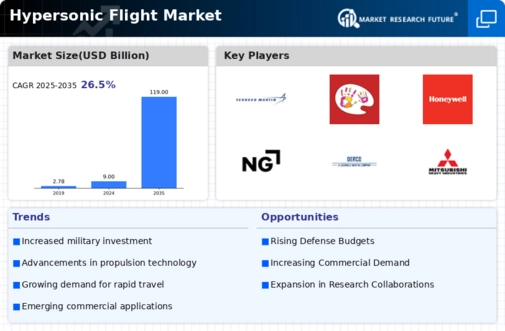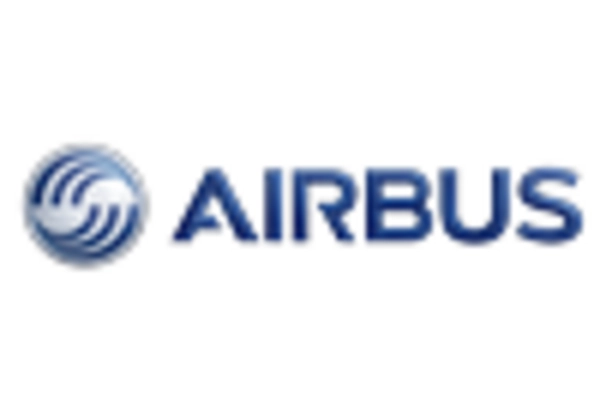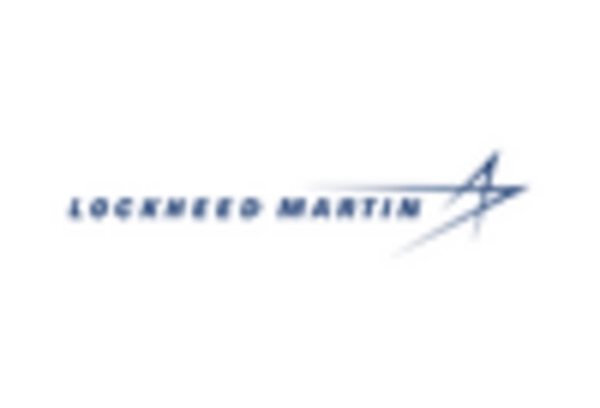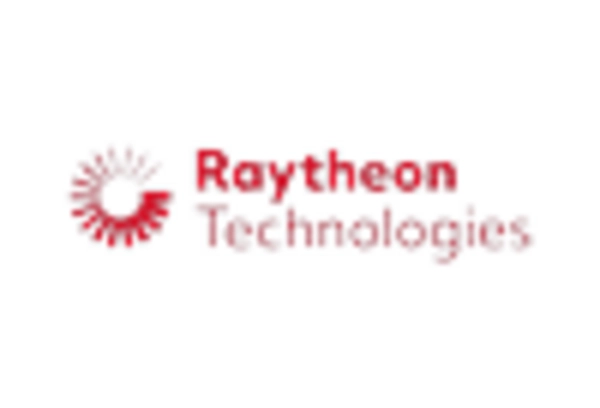Rising Demand for Fast Transportation
The Hypersonic Flight Market is witnessing a surge in demand for rapid transportation solutions. As global trade and travel continue to expand, the need for faster travel options becomes increasingly apparent. Hypersonic flight, capable of exceeding speeds of Mach 5, offers a potential solution to this demand. According to recent estimates, the market for hypersonic travel could reach USD 1.5 billion by 2030, driven by both commercial and military applications. This demand is not only limited to passenger travel but also extends to cargo transport, where time-sensitive deliveries are crucial. The ability to traverse vast distances in a fraction of the time currently required positions hypersonic flight as a transformative force in the transportation sector.
Commercialization of Hypersonic Travel
The Hypersonic Flight Market is on the brink of commercialization, with several companies actively pursuing the development of hypersonic passenger travel. Initiatives by private firms aim to create viable commercial routes that could revolutionize air travel. The potential for reducing flight times from hours to mere minutes is attracting significant interest from investors and consumers alike. Market analysts predict that the first commercial hypersonic flights could be operational by 2035, with ticket prices initially set to attract affluent travelers. This shift towards commercialization is expected to stimulate further investment and innovation within the hypersonic sector, ultimately leading to broader accessibility.
Military Applications and Defense Strategies
The Hypersonic Flight Market is significantly influenced by military applications and evolving defense strategies. Nations are increasingly investing in hypersonic technologies to enhance their military capabilities. The potential for hypersonic weapons to evade traditional missile defense systems has prompted a race among countries to develop and deploy such technologies. Reports indicate that defense budgets allocated for hypersonic research and development could exceed USD 10 billion by 2025. This focus on military applications not only drives innovation but also fosters collaboration between government and private sectors, further propelling advancements in the hypersonic flight domain.
Technological Innovations in Aerospace Engineering
The Hypersonic Flight Market is propelled by ongoing technological innovations in aerospace engineering. Advances in materials science, propulsion systems, and aerodynamics are critical to overcoming the challenges associated with hypersonic flight. For instance, the development of heat-resistant materials and advanced propulsion technologies is essential for sustaining the extreme conditions experienced at hypersonic speeds. The market is projected to grow at a compound annual growth rate (CAGR) of 15% over the next decade, reflecting the increasing investment in research and development. These innovations not only enhance the feasibility of hypersonic travel but also contribute to the overall safety and efficiency of flight operations.
Environmental Considerations and Sustainable Solutions
The Hypersonic Flight Market is increasingly addressing environmental considerations as sustainability becomes a priority in aviation. The development of hypersonic technologies is accompanied by a growing emphasis on reducing carbon emissions and improving fuel efficiency. Research indicates that hypersonic vehicles could potentially utilize alternative fuels, which may lessen their environmental impact. As regulatory bodies and consumers demand greener solutions, the industry is likely to adapt by integrating sustainable practices into hypersonic flight development. This focus on environmental responsibility could not only enhance the market's reputation but also attract investment from eco-conscious stakeholders.

















Leave a Comment